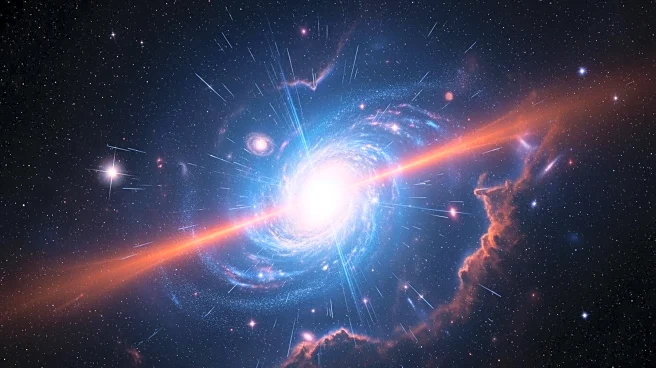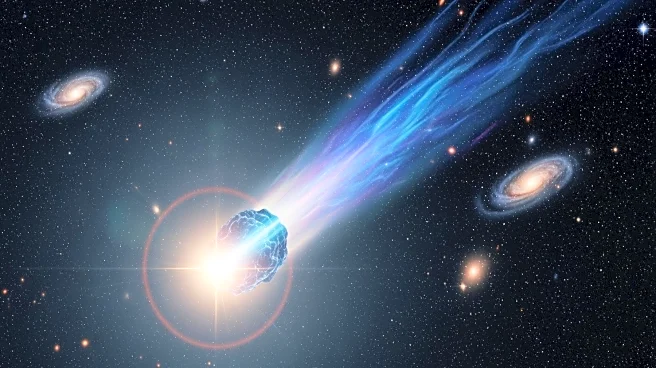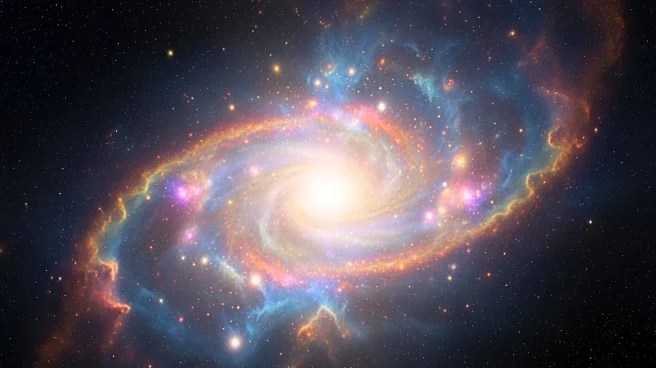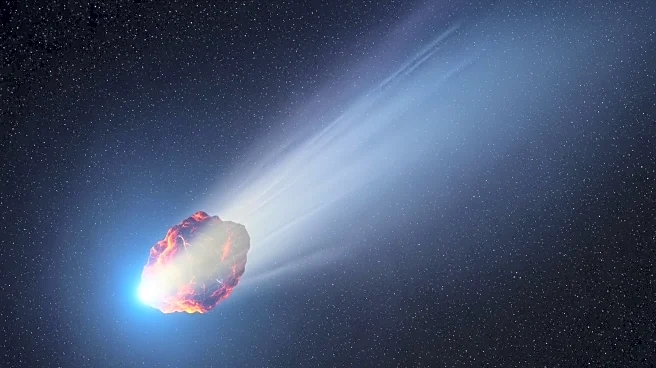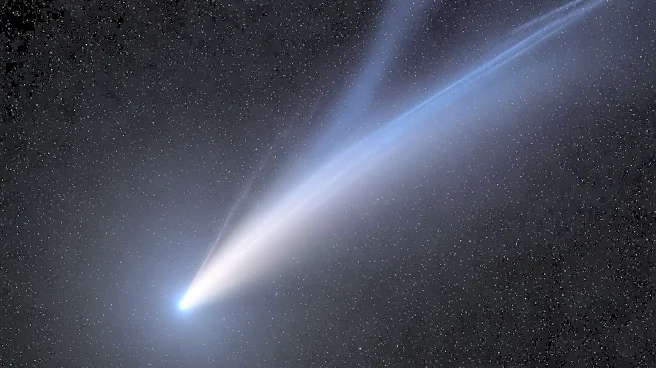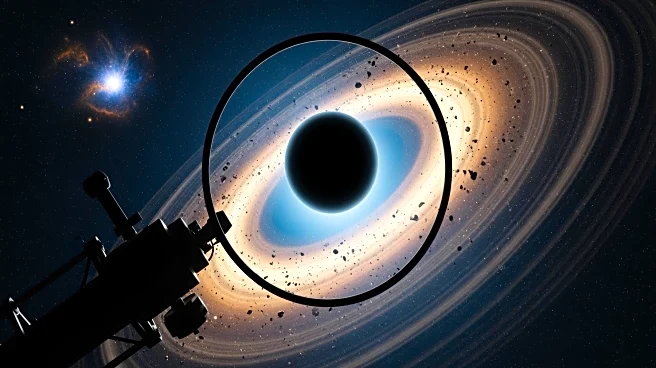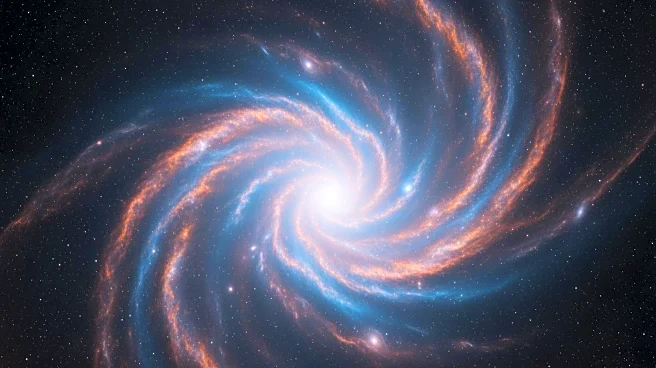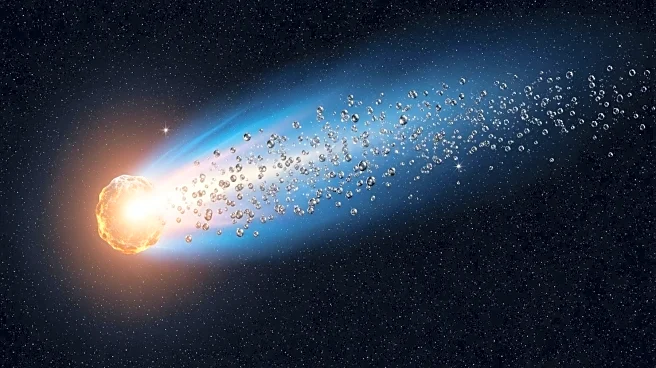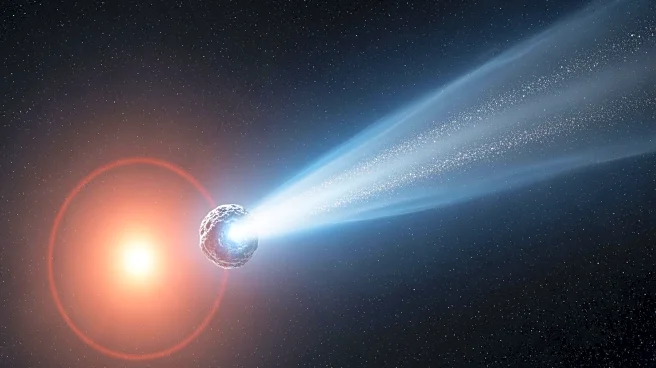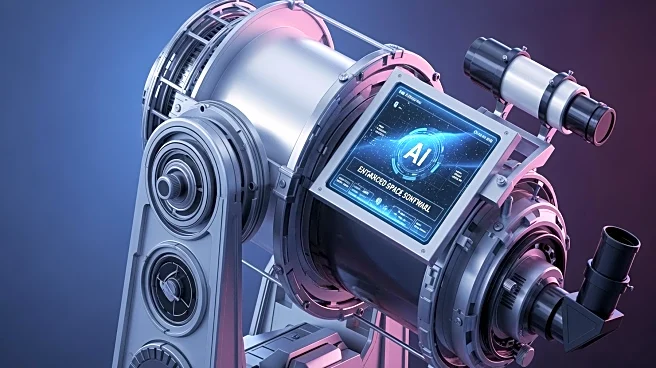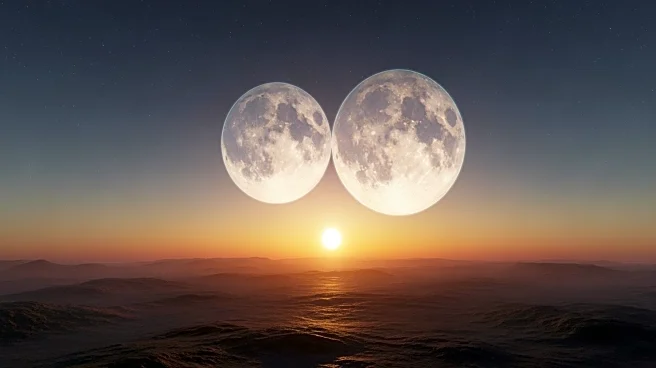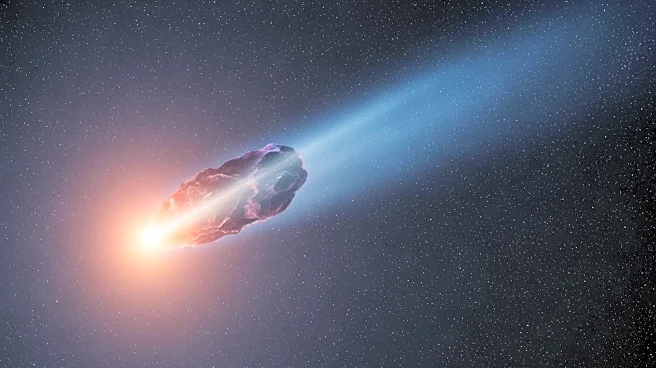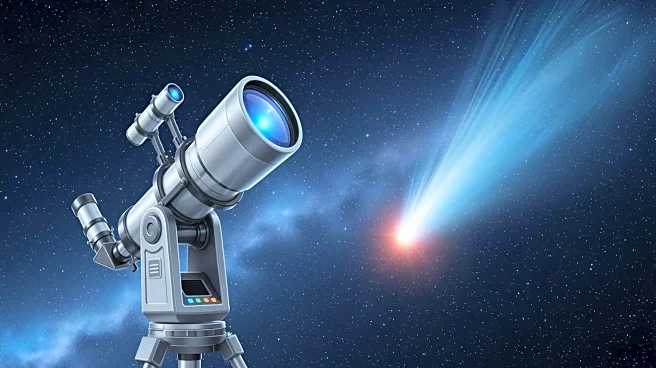What's Happening?
The James Webb Space Telescope (JWST) has captured a detailed view of Herbig-Haro object 49/50 (HH 49/50), an outflow from a protostar in the Chamaeleon I molecular cloud. This region, located about 625 light-years from Earth, is known for forming low-mass
stars. JWST's infrared imaging revealed intricate arcs and emissions from hydrogen, carbon monoxide, and energized dust, generated by high-velocity jets from the protostar Cederblad 110 IRS4. The observations resolved a previous mystery from the Spitzer Space Telescope, identifying a feature at HH 49/50's tip as a distant spiral galaxy.
Why It's Important?
The JWST's observations provide new insights into the early stages of star formation, which are difficult to study due to the surrounding gas and dust. By penetrating these obstacles with infrared imaging, JWST offers a clearer picture of protostars and their environments. This research enhances our understanding of the processes that lead to star formation and the conditions in molecular clouds. The findings also contribute to the broader study of cosmic evolution and the lifecycle of stars.
Beyond the Headlines
The discovery of a distant spiral galaxy at the tip of HH 49/50 highlights the JWST's capability to resolve complex cosmic structures. This capability allows astronomers to study not only nearby star-forming regions but also distant galaxies, providing a comprehensive view of the universe. The JWST's findings may lead to new theories about the interactions between protostars and their environments, as well as the role of molecular clouds in star formation.
